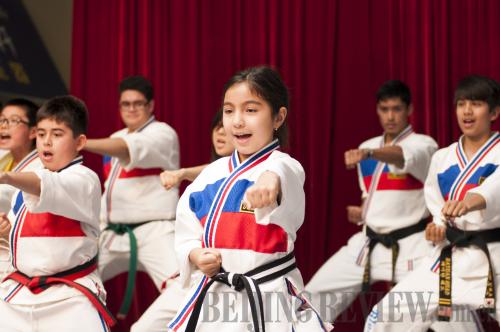|
 |
|
HI-YAAAAH!: Students of Brooklyn's Blue Dragon Taekwondo team show off their moves at a festival during the Asian American & Pacific Islander Heritage month in New York City |
May is Asian American & Pacific Islander Heritage month in the United States, and Asian communities around the nation are showing their pride with festivals, parades and celebrations. This year's theme is "Leadership to Meet the Challenge of a Changing World."
The annual festival, held by the Coalition of Asian Pacific Americans, is the longest running and largest event celebrating pan-Asian heritage nationwide, said organizers.
In New York City, the place to be is the annual Asian American & Pacific Islander Heritage Festival, held in Flushing and in Manhattan's Chinatown districts.
More than 20,000 visitors were expected to come for a day of dance performances, activities for children, Asian cuisine and to visit the booths of American and Pacific Islander organizations.
Attendees also enjoyed empowerment workshops for Asian-American professionals and a panel on leadership. Musical performances included Polynesian dancers, Japanese drummers, and Cantonese pop stars.
Also on view were cultural demonstrations such as traditional Chinese martial arts, Korean ornamental knotting, paper cutting and Mehandi.
"It celebrates not only the value of families, but also our heritage, which make us proud to be Asian American and Pacific Islanders," organizers said in a release.
The city is dotted with enclaves titled "Little Bangladesh," "Little Manila," "K-town," and "Little Tokyo." Finding common ground among such diverse groups under the banner of "Asian" is "a constant tension our coalition faces," said Steven Choi, 35, a community organizer and son of Korean immigrants.
Choi leads a group called the "12 Percent and Growing Coalition," a lobbying initiative formed in 2008 that unites more than 45 organizations led by Asians or serve its population.
"It's important as a coalition that we're not letting one narrative dominate over another," he said.
The author is a contributing writer to Beijing Review, living in New York City
| 